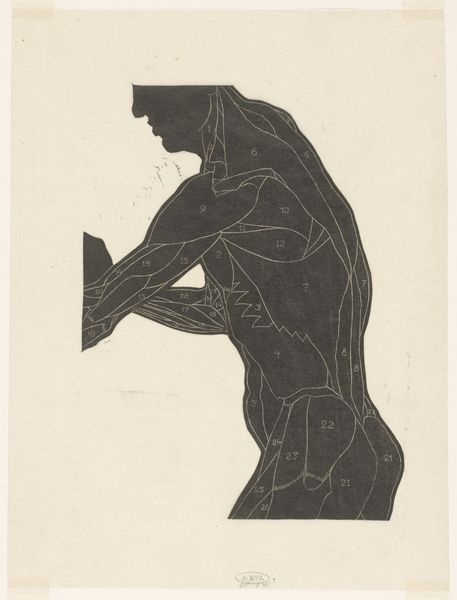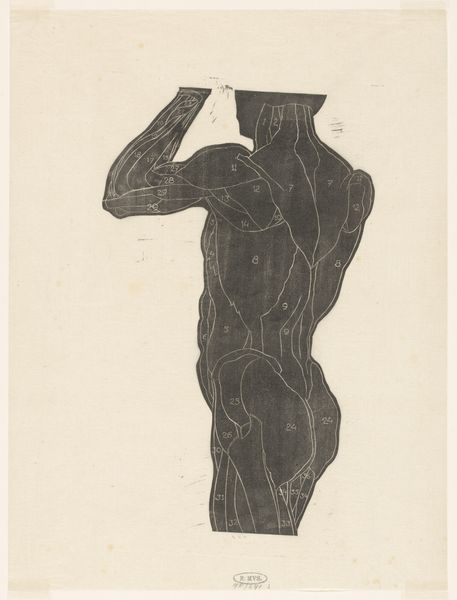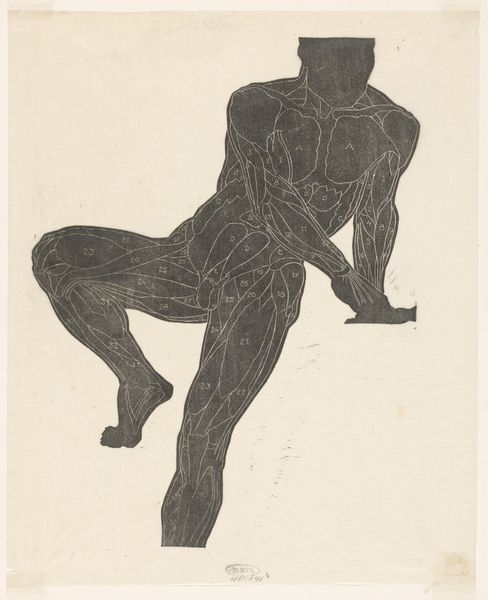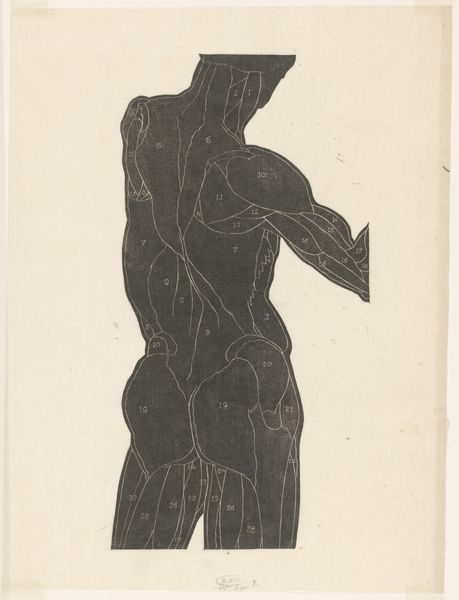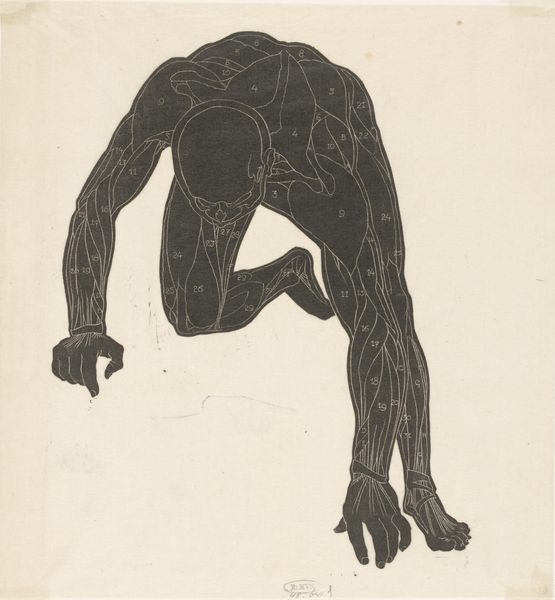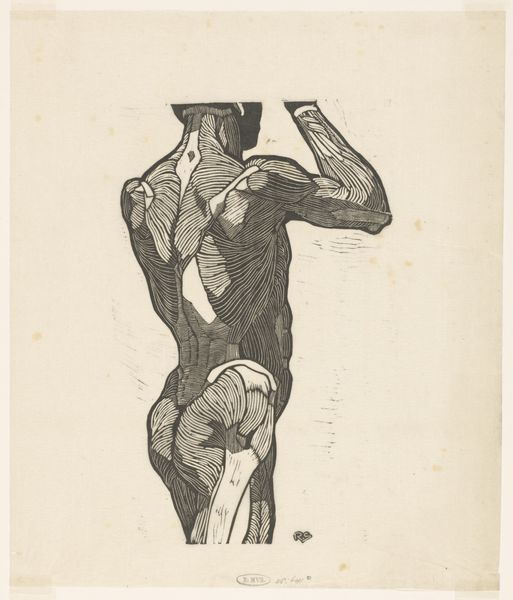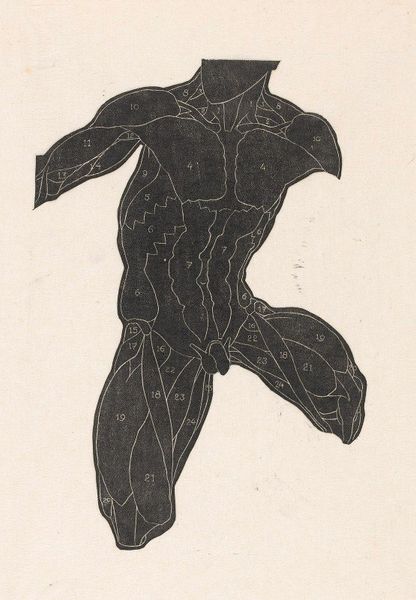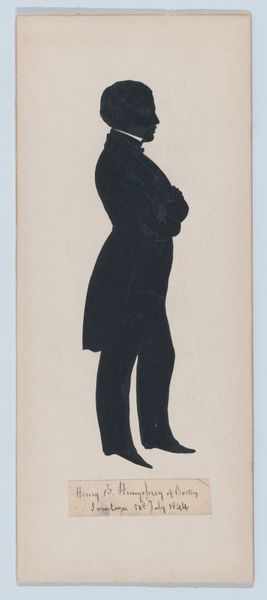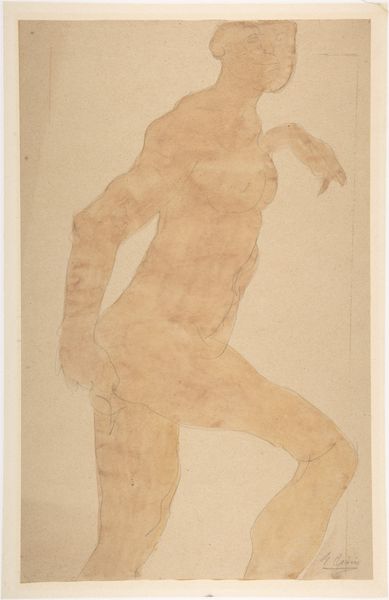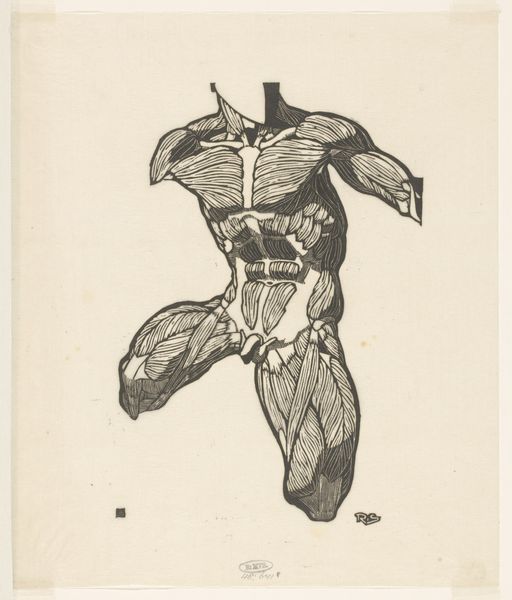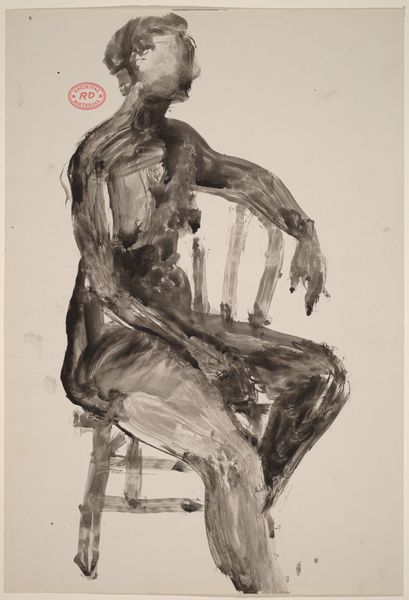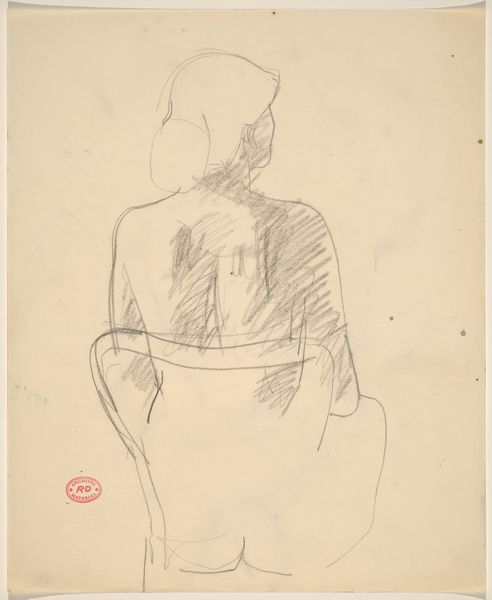
Anatomische studie van de rugspieren van een man in silhouet 1906 - 1945
0:00
0:00
reijerstolk
Rijksmuseum
drawing, ink
#
drawing
#
old engraving style
#
figuration
#
personal sketchbook
#
ink
#
line
#
academic-art
#
monochrome
Dimensions: height 318 mm, width 230 mm
Copyright: Rijks Museum: Open Domain
Editor: This ink drawing, "Anatomische studie van de rugspieren van een man in silhouet," is currently held in the Rijksmuseum and dates somewhere between 1906 and 1945. What I find interesting is how the artist has created a silhouette of the figure, then carved out a map of the musculature within. What do you make of the artist’s choices here? Curator: The fundamental dynamic at play here involves the figure-ground relationship. We perceive a solid form, only to discover that this solidity is deceptive, as it yields to intricate lines which chart anatomical detail. What is foreground, what is background? That line between academic study and representational image, that tension intrigues me most. Editor: So you are saying the subject of the piece is less anatomy and more our *perception* of the anatomy? Curator: Precisely. The artist's use of stark black ink, coupled with the implied form of a human figure, leads us to investigate depth. How do we know we are viewing a human form without, in effect, actually seeing one? The linear composition, carefully incised into the solid mass, further guides us into understanding an unseen dimension. Editor: It’s like a visual puzzle! It’s not just about what muscles are where, but about how the artist prompts us to question what is there at all. Curator: Consider how the composition directs the viewer's eye, primarily from the negative space into positive definition. A constant flux that defines both the image and our gaze. Do you agree? Editor: Definitely! I hadn't thought of it that way, but now I see how the artist uses line to orchestrate our viewing experience, it becomes clear there is purpose and intent beyond just technical illustration. It really makes you think. Curator: And that probing, questioning nature is often the highest achievement of artistic endeavour.
Comments
No comments
Be the first to comment and join the conversation on the ultimate creative platform.
